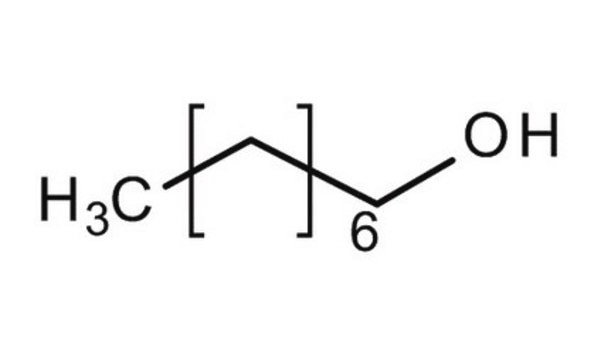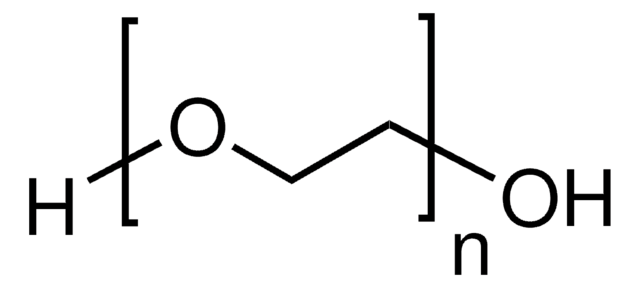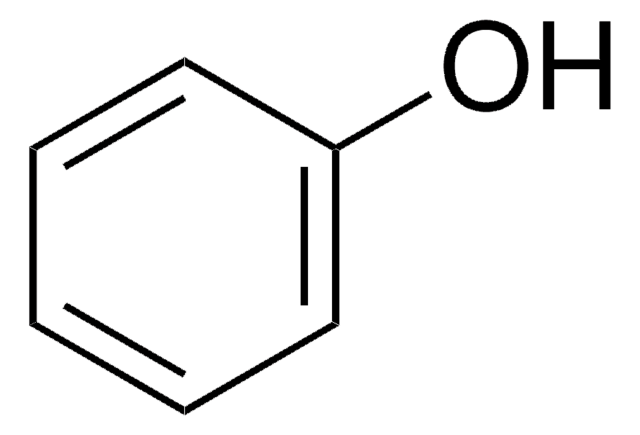95446
1-Octanol
analytical standard
Synonym(s):
Alcohol C8, Capryl alcohol, Octyl alcohol
About This Item
Recommended Products
grade
analytical standard
Quality Level
vapor density
4.5 (vs air)
vapor pressure
0.14 mmHg ( 25 °C)
assay
≥99.7% (GC)
autoignition temp.
523 °F
shelf life
limited shelf life, expiry date on the label
technique(s)
HPLC: suitable
gas chromatography (GC): suitable
refractive index
n20/D 1.429 (lit.)
n20/D 1.429
bp
196 °C (lit.)
mp
−15 °C (lit.)
density
0.827 g/mL at 25 °C (lit.)
application(s)
cleaning products
cosmetics
environmental
flavors and fragrances
food and beverages
personal care
format
neat
SMILES string
CCCCCCCCO
InChI
1S/C8H18O/c1-2-3-4-5-6-7-8-9/h9H,2-8H2,1H3
InChI key
KBPLFHHGFOOTCA-UHFFFAOYSA-N
Looking for similar products? Visit Product Comparison Guide
General description
Application
Biochem/physiol Actions
signalword
Warning
hcodes
Hazard Classifications
Aquatic Acute 1 - Aquatic Chronic 3 - Eye Irrit. 2
Storage Class
10 - Combustible liquids
wgk_germany
WGK 1
flash_point_f
187.7 °F
flash_point_c
86.5 °C
ppe
Eyeshields, Gloves, type ABEK (EN14387) respirator filter
Choose from one of the most recent versions:
Certificates of Analysis (COA)
Sorry, we don't have COAs for this product available online at this time.
If you need assistance, please contact Customer Support.
Already Own This Product?
Find documentation for the products that you have recently purchased in the Document Library.
Customers Also Viewed
Protocols
-β-Farnesene; α-Huµlene; Germacrene D; (+)-Valencene; Bicyclogermacrene; (+)-δ-Cadinene
Our team of scientists has experience in all areas of research including Life Science, Material Science, Chemical Synthesis, Chromatography, Analytical and many others.
Contact Technical Service









